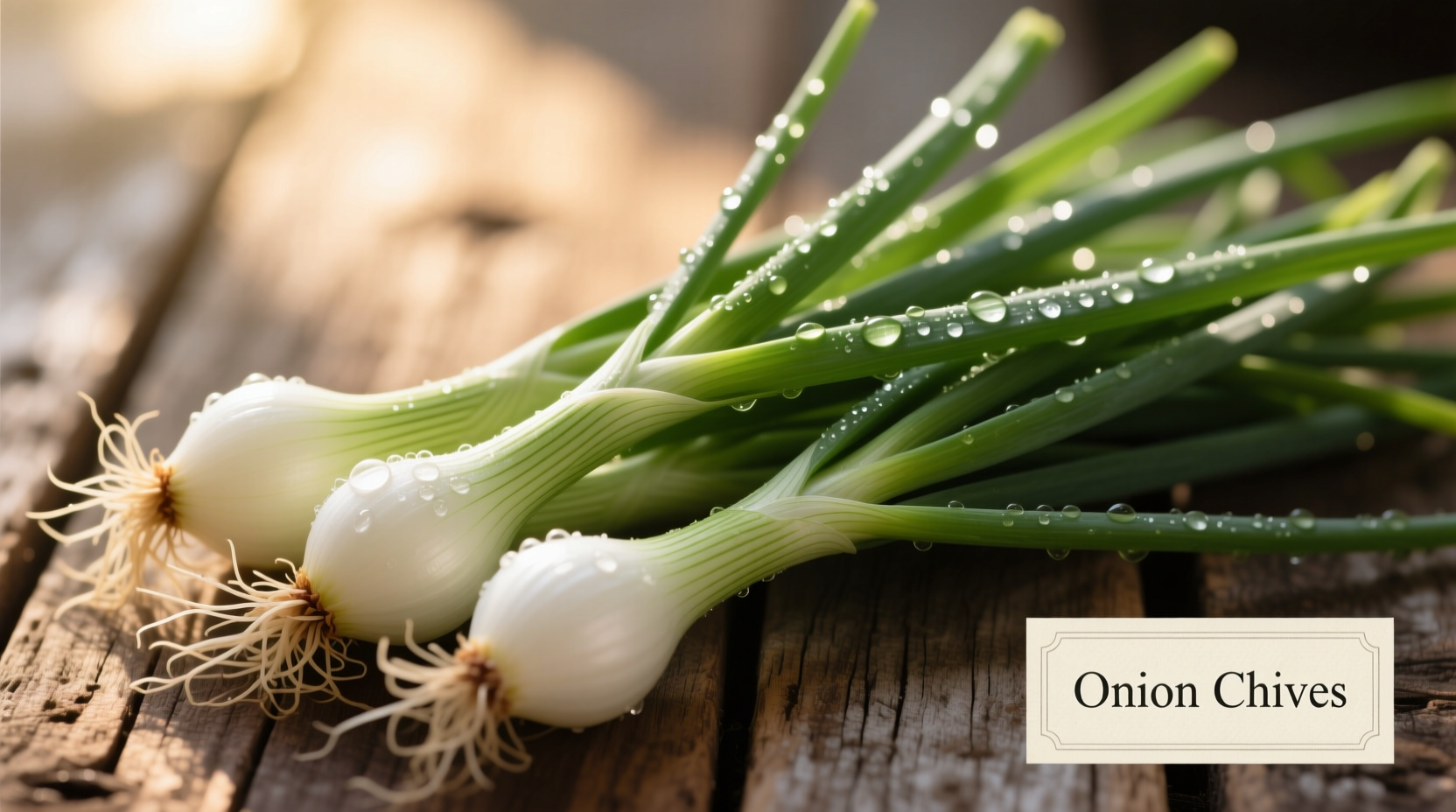When you reach for onion chives in your garden or grocery store, you're selecting a culinary powerhouse that brings subtle yet distinctive flavor to countless dishes. Unlike their floral cousin regular chives, onion chives deliver consistent onion notes without the garlic undertones, making them indispensable for specific cooking applications. This guide reveals exactly what sets them apart, how to maximize their flavor potential, and why they deserve a permanent spot in your herb collection.
What Makes Onion Chives Unique
Botanically classified as Allium fistulosum, onion chives belong to the same family as onions, garlic, and leeks but represent a distinct species. These hardy perennials feature hollow, cylindrical green stalks that grow in dense clumps, typically reaching 12-18 inches in height. Unlike regular chives (Allium schoenoprasum), they rarely produce flowers, instead focusing energy on robust stem development.
The USDA Agricultural Research Service confirms onion chives contain organosulfur compounds responsible for their characteristic mild onion flavor, with significantly lower allicin content than bulb onions. This chemical profile creates their signature taste that's less pungent than scallions but more pronounced than regular chives.

Onion Chives vs Regular Chives: Key Differences
| Characteristic | Onion Chives | Regular Chives |
|---|---|---|
| Botanical Name | Allium fistulosum | Allium schoenoprasum |
| Flavor Profile | Mild onion throughout stem | Delicate garlic-onion, strongest at base |
| Flowering | Rarely flowers | Produces purple flowers |
| Stem Structure | Hollow, uniform diameter | Hollow, slightly tapered |
| Cold Hardiness | USDA Zones 3-10 | USDA Zones 4-9 |
Culinary Applications and Flavor Pairing
Professional chefs value onion chives for their consistent flavor profile that holds up during cooking better than regular chives. The University of California Cooperative Extension notes their higher sulfur compound stability makes them ideal for cooked dishes where regular chives would lose their delicate flavor.
Maximize their potential with these techniques:
- Slicing method: Cut into 1/4-inch pieces at a slight angle for optimal surface area
- Cooking timing: Add during last 2-3 minutes of cooking to preserve flavor
- Flavor pairings: Complements fish, potatoes, eggs, and creamy sauces exceptionally well
- Heat application: Tolerates light sautéing better than regular chives
For Asian cuisine applications, Cornell University's School of Integrative Plant Science documents that onion chives are essential in Japanese negi and Chinese cong you dishes, where their mild onion flavor enhances without overpowering delicate broths and stir-fries.
Successful Cultivation Guide
Growing onion chives requires minimal effort but delivers maximum reward. These perennials thrive in most temperate climates with proper care:
Planting requirements:
- Soil: Well-draining loam with pH 6.0-7.0
- Sunlight: Full sun to partial shade (6+ hours daily)
- Spacing: 6-8 inches between plants
- Planting depth: 1-2 inches for seeds, crown-level for transplants
Unlike regular chives, onion chives demonstrate remarkable resilience in wet conditions. Oregon State University's Extension Service reports they maintain flavor integrity after heavy rainfall where regular chives often become waterlogged and lose potency. For continuous harvest, implement the "cut-and-come-again" method by harvesting outer stalks first, allowing inner growth to mature.
Substitution Guidelines
Understanding when you can substitute onion chives is crucial for recipe success. The Culinary Institute of America's flavor research reveals important context boundaries:
Effective substitutions:
- Scallion greens (use 25% less due to stronger flavor)
- Leek greens (finely sliced, for cooked applications)
- Regular chives (in raw applications only)
Avoid substituting when:
- Recipe specifically requires the mild onion flavor throughout the stem
- Preparing Japanese negi-based dishes
- Creating delicate egg dishes where garlic notes would clash
When substituting regular chives for onion chives, increase quantity by 30% to compensate for flavor differences, but never in cooked applications where regular chives lose their delicate flavor.
Storage and Preservation Techniques
Maximize shelf life with these professional methods:
Short-term storage (1-2 weeks):
- Trim ends and place in glass with 1 inch of water
- Cover loosely with plastic bag
- Refrigerate and change water every 2 days
Long-term preservation:
- Freezing: Chop finely, spread on baking sheet, freeze, then transfer to airtight container
- Drying: Not recommended (loses most flavor)
- Infused oil: Combine with mild oil for salad dressings
Research from the National Center for Home Food Preservation confirms frozen onion chives retain 85% of their flavor compounds for up to 6 months, significantly outperforming regular chives which degrade faster due to more volatile compounds.











 浙公网安备
33010002000092号
浙公网安备
33010002000092号 浙B2-20120091-4
浙B2-20120091-4